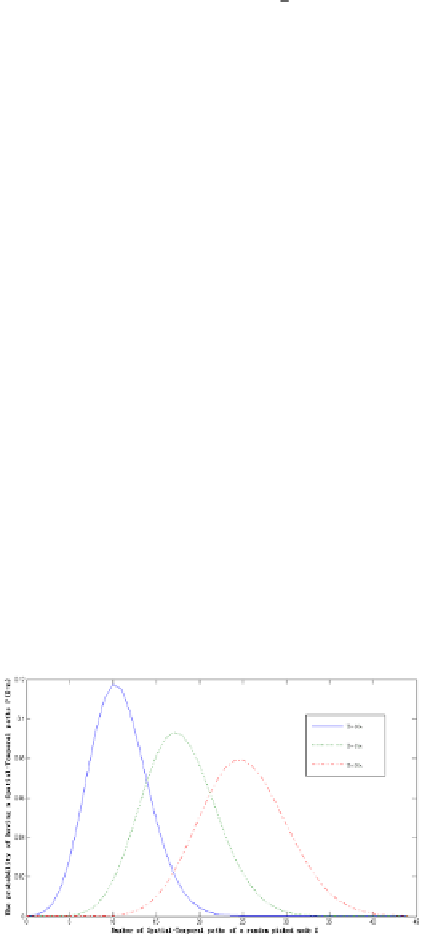Information Technology Reference
In-Depth Information
PU
(
==
n
)
(1)
m
N m
−
n
m n
−
CWindow
CWindow
α
α
C
m
*
* 1
−
*
C
n
*
* 1
−
N
m
S
S
π
π
map
map
We go back for nodes that were originally located in circle
Sr
. These nodes can
contact S from time 0, so the probability for q of N nodes that communicate with S is
−
q
N
−
q
2
2
π
*
r
π
*
r
(2)
q
N
PV
(
==
q
)
C
*
* 1
−
S
S
map
map
Step 3:
Probability for n nodes having Spatial-Temporal links with S
Based on (1) and (2), we get the probability for n nodes having Spatial-Temporal links
with a certain node S,
Theorem 1:
n
N
PX
(
==
n
)
PU
(
=
i
)
*
PV
(
=− =
n i
)
i
=
0
m
=
i
m
N
−
m
CW indow
CW indow
m
N
C
*
*
1
−
S
S
N
map
map
i
m
−
i
n
α
α
mi
=
**
C
i
m
*1
−
π
π
i
=
0
ni
−
N ni
−
+
π
*
r
2
π
*
r
2
*
C
ni
N
−
*
*
1
−
S
S
map
map
From Theorem 1, we get the probability distribution of n nodes having Spa-
tial-Temporal link with a certain node S within Message Life Time T:
Fig. 3.
Probability for all the nodes having n Spatial-Temporal links with a certain node S
1.
It shows that in T=15s, probability for all the nodes having 18 Spatial-Temporal links with a certain
node S is 9% in analytical results;
2.
When T=20s, analytical result shows probability for all the nodes having 26 Spatial-Temporal links
with a certain node S is 8%.










